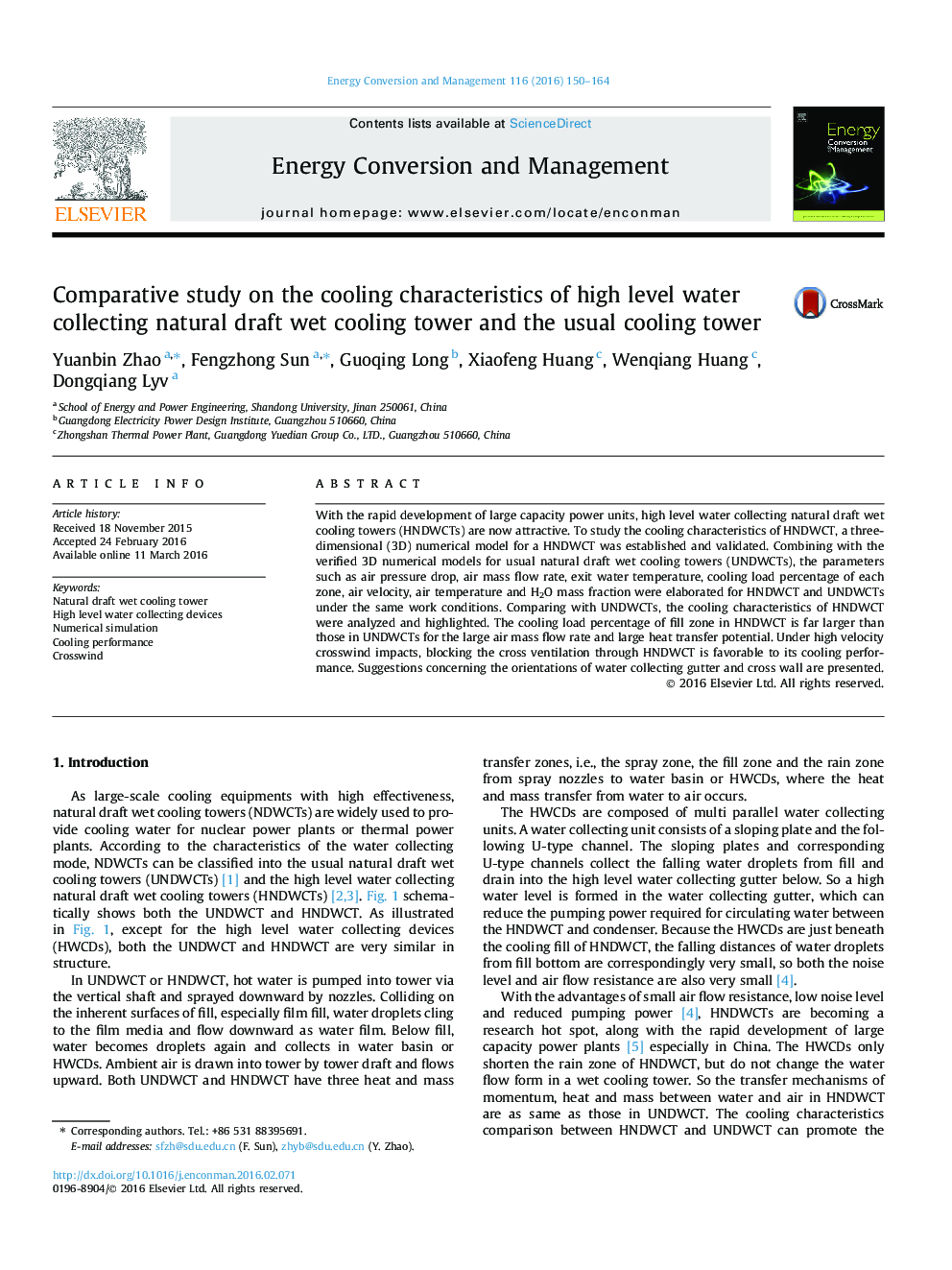| Article ID | Journal | Published Year | Pages | File Type |
|---|---|---|---|---|
| 760226 | Energy Conversion and Management | 2016 | 15 Pages |
•The 3D numerical models for HNDWCT and UNDWCTs were established and validated.•Comparing with UNDWCTs, the cooling characteristics of HNDWCT were highlighted.•The high air–water mass flow rate ratio of HNDWCT amplifies its fill cooling load.•The minimum heat and mass transfer intensity in HNDWCT occurs near the tower wall.•Blocking the cross ventilation is favorable to HNDWCT at high velocity crosswinds.
With the rapid development of large capacity power units, high level water collecting natural draft wet cooling towers (HNDWCTs) are now attractive. To study the cooling characteristics of HNDWCT, a three-dimensional (3D) numerical model for a HNDWCT was established and validated. Combining with the verified 3D numerical models for usual natural draft wet cooling towers (UNDWCTs), the parameters such as air pressure drop, air mass flow rate, exit water temperature, cooling load percentage of each zone, air velocity, air temperature and H2O mass fraction were elaborated for HNDWCT and UNDWCTs under the same work conditions. Comparing with UNDWCTs, the cooling characteristics of HNDWCT were analyzed and highlighted. The cooling load percentage of fill zone in HNDWCT is far larger than those in UNDWCTs for the large air mass flow rate and large heat transfer potential. Under high velocity crosswind impacts, blocking the cross ventilation through HNDWCT is favorable to its cooling performance. Suggestions concerning the orientations of water collecting gutter and cross wall are presented.
